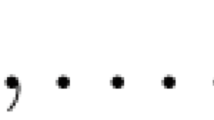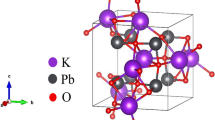Abstract
In this paper, we describe the tenets of a chemical topology of crystalline matter and certain associated rational approximations to the transcendental mathematical constants ϕ, e and π, that arise out of considerations of both: (1) the Euler relation for the division of the sphere into vertices, V, faces, F, and edges, E, and: (2) its simple algebraic transformation into the so-called Schläfli relation, which is an equivalent mathematical statement for the polyhedra, in terms of parameters known as the polygonality, defined as n = 2E/F, and the connectivivty, defined as p = 2E/V. It is thus the transformation to the Schläfli relation from the Euler relation, in particular, that enables one to move from a simple heuristic mapping of the polyhedra in the space of V, F and E, into a corresponding heuristic mapping into Schläfli-space, the space circumscribed by the parameters of n and p. It is also true, that this latter transformation equation, the Schläfli relation, applies only directly to the polyhedra, again, with their corresponding Schläfli symbols (n, p), but as a bonus, there is a direct 1-to-1 mapping result for the polyhedra, that can be seen to also be extendable to the tessellations in 2-dimensions, and the networks in 3-dimensions, in terms of coordinates in a 2-dimensional Cartesian grid, represented as the Schläfli symbols (n, p), as discussed above, which do not involve rigorous solutions to the Schläfli relation. For while one could never identify the triplet set of integers (V, F, E) for the tessellations and networks, that would fit as a rational solution within the Euler relation, it is in fact possible for one to identify the corresponding values of the ordered pair (n, p) for any tessellation or network. The identification of the Schläfli symbol (n, p) for the tessellations and networks emerges from the formulation of its so-called Well’s point symbol, through the proper translation of that Well’s point symbol into an equivalent and unambiguous Schläfli symbol (n, p) for a given tessellation or network, as has been shown by Bucknum et al. previously. What we report in this communication, are the computations of some, certain Schläfli symbols (n, p) for the so-called Waserite (also called platinate, Pt3O4, a 3-,4-connected cubic pattern), Moravia (A3B8, a 3-,8-connected cubic pattern) and Kentuckia (ABC2, a 4-,6-,8-connected tetragonal pattern) networks, and some topological descriptors of other relevant structures. It is thus seen, that the computations of the polygonality and connectivity indexes, n and p, that are found as a consequence of identifying the Schläfli symbols for these relatively simple networks, lead to simple and direct connections to certain rational approximations to the transcendental mathematical constants ϕ, e and π, that, to the author’s knowledge, have not been identified previously. Such rational approximations lead to elementary and straightforward methods to estimate these mathematical constants to an accuracy of better than 99 parts in 100.
Similar content being viewed by others
References
Bucknum M.J.: Carbon 35(1), 1 (1997)
L. Euler, Elementa doctrinae solidorum et Demonstratio nonnularum insignium proprietatum quibus solida heddris planis inclusa sunt praedita. in Proceedings of the St. Petersburg Academy, St. Petersburg, Russia (1758)
J.J. Burckhardt, Der mathematische Nachlass von Ludwig Schläfli, 1814–1895, in der Schweizerischen Landesbibliothek, 1st edn. (Bern, 1942)
Wells A.F.: Three Dimensional Nets and Polyhedra, 1st edn. John Wiley and Sons Inc., New York, NY (1977)
Gardner M.: Archimedes: Mathematician and Inventor, 1st edn. Macmillan Publishing, New York, NY (1965)
Frederico P.J.: Descartes on Polyhedra: A Study of the De Solidorum Elementis, 1st edn. Springer-Verlag, New York, NY (1982)
Wells A.F.: Further Studies of Three-dimensional Nets, American Crystallographic Association (A.C.A), Monograph #8, 1st edn. A.C.A Press, Pittsburgh, PA (1979)
Peters I.: Sci. News 160(25/26), 396 (2001)
Bucknum M.J., Castro E.A.: . (MATCH) Commun. Math. Comp. Chem. 54, 89 (2005)
Cooper, J.M. (eds): Plato: Complete Works, 1st edn. Hackett Publishing Company, Indianapolis, IN (1997)
Bragg W.L.: The Development of X-ray Analysis, 1st edn. Dover Publications, Inc., Mineola, NY (1975)
Pauling L.: The Nature of the Chemical Bond, 3rd edn. Cornell University Press, Ithaca, NY (1960)
Duchowicz P., Bucknum M.J., Castro E.A.: J. Math. Chem. 41(2), 193 (2007)
(a) M.J. Bucknum, E.A. Castro, (MATCH) Commun. Math. Comp. Chem. 55, 57 (2006); (b) M.J. Bucknum, E.A. Castro, Solid State Sci. (2008) (in press)
Baughman R.H., Eckhardt H., Kertesz M.: J. Chem. Phys. 87(11), 6687 (1987)
(a) A.T. Balaban, C.C. Rentea, E. Ciupitu, Rev. Roum. Chim. 13, 231 (1968); (b) H. Zhu, A.T. Balaban, D.J. Klein, T.P. Zivkovic, J. Chem. Phys. 101, 5281 (1994)
Crespi V.H., Benedict L.X., Cohen M.L., Louie S.G.: Phys. Rev. B 53, R13303 (1996)
Wen B., Zhao J., Bucknum M.J., Yao P., Li T.: Diamond Relat. Mat. 17, 356 (2008)
Bucknum M.J., Castro E.A.: J. Chem. Theory Comput. 2(3), 775 (2006)
Balaban A.T., Klein D.J., Folden C.A.: Chem. Phys. Lett. 217, 266 (1994)
Karfunkel H.R., Dressler T.: J. Am. Chem. Soc. 114, 2285 (1992)
Bucknum M.J.: Chem. Preprint Arch. 2001(1), 75 (2001)
Baggott J.: Perfect Symmetry: The Accidental Discovery of Buckminsterfullerene, 1st edn. Oxford University Press, Oxford, U.K. (1996)
Bucknum M.J., Hoffmann R.: J. Am. Chem. Soc. 116, 11456 (1994)
Bucknum M.J., Castro E.A.: J. Theor. Comput. Chem. 5(2), 175 (2006)
Bucknum M.J.: Castro, Mol. Phys. 103(20), 2707 (2005)
O’Keeffe M., Hyde B.G.: Crystal Structures I. Patterns and Symmetry, 1st edn. Mineralogical Society of America (M.S.A.), Washington, D.C. (1996)
Waser J., McClanahan E.D.: J. Chem. Phys. 19, 413 (1951)
Siegrist T., Zahurak S.M., Murphy D.W., Roth R.S.: Nature 334, 231 (1988)
Dincã M., Dailly A., Liu Y., Brown C.M., Neumann D.A., Long J.R.: J. Am. Chem. Soc. 128, 16876 (2006)
Bucknum M.J., Castro E.A.: Russ. J. Gen. Chem. 76(2), 265 (2006)
Bucknum M.J., Castro E.A.: Central European J. Chem. (CEJC) 3(1), 169 (2005)
Bucknum M.J., Castro E.A.: J. Math. Chem. 42(3), 373 (2007)
(a) P. Beckmann, A History of π, 1st edn. (The Golem Press, New York, NY, 1971); (b) D. Blatner, The Joy of π, 1st edn. (Walker Publishing Company, Inc., USA, 1997)
Maor E., e: The Story of a Number, 1st edn. Princeton University Press, Princeton, NJ (1994)
Bucknum M.J., Wen B., Castro E.A.: Glob. J. Mol. Sci. 2(2), 37 (2007)
Livio M.: The Golden Ratio: The Story of ϕ, the World’s Most Astonishing Number, 1st edn. Broadway Books, New York, NY (2002)
Author information
Authors and Affiliations
Corresponding author
Rights and permissions
About this article
Cite this article
Bucknum, M.J., Castro, E.A. Chemical topology of crystalline matter and the transcendental numbers ϕ, e and π . J Math Chem 46, 117–138 (2009). https://doi.org/10.1007/s10910-008-9446-8
Received:
Accepted:
Published:
Issue Date:
DOI: https://doi.org/10.1007/s10910-008-9446-8




